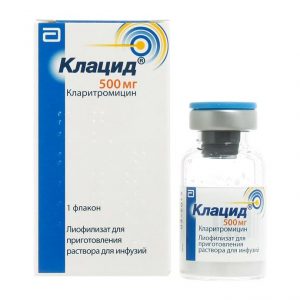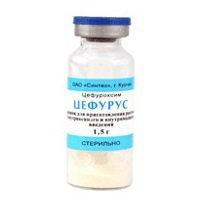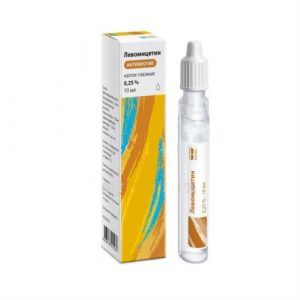Description
Latin name
Ceftriaxone
Release form
Powder for preparation for solution for intravenous and intramuscular
Pharmacological action
Ceftriaxone is a broad-spectrum, third-generation cephalosporin antibiotic. It acts bactericidal, inhibiting the synthesis of the cell wall of microorganisms. Resistant to -Lactamases of most gram-positive and gram-negative bacteria.
Active against Gram-positive aerobic bacteria: Staphylococcus aureus (including penicillinase-producing strains), Staphylococcus epidermidis, Streptococcus pneumoniae, Streptococcus pyogenes, Streptococcus viridans, colobactericobacterobacterobacterobacterobacterium bacteria, Acinetobus bacterobocerobacterobacterobacterobacterobacterobacterium bacteria including penicillinase producing strains), Haemophilus parainfluenzae, Klebsiella spp. (including Klebsiella pneumoniae), Moraxella catarrhalis (including penicillinase producing strains), Morganella morganii, Neisseria gonorrhoeae (including penicillinase producing strains), Neisseria meningitidis, Proteus mirabilis, Proteus vulgaris, Serratia spp. (including Serratia marÑescens), Pseudomonas aeruginosa (individual strains) of anaerobic bacteria: Bacteroides fragilis, Clostridium spp. (except Clostridium difficile), Peptostreptococcus spp.
Has in vitro activity against most strains of the following microorganisms, although the clinical significance of this is unknown: Citrobacter diversus, Citrobacter freundii, Providencia spp. (including Providencia rettgeri), Salmonella spp. (including Salmonella typhi), Shigella spp., Streptococcus agalactiae, Bacteroides bivius, Bacteroides melaninogenicus.
Methicillin-resistant staphylococci are also resistant to cephalosporins, including ceftriaxone. Many strains of group D streptococci and enterococci (including Enterococcus faecalis) are also resistant to ceftriaxone.
Pharmacokinetics
Absorption and distribution of
After intramuscular administration, ceftriaxone is rapidly and completely absorbed into the systemic circulation. It penetrates well into tissues and body fluids: the respiratory tract, bones, joints, urinary tract, skin, subcutaneous tissue and abdominal organs. With inflammation of the meningeal membranes, it penetrates well into the cerebrospinal fluid. The bioavailability of ceftriaxone intramuscularly is 100%. After intramuscular administration, Cmax is achieved after 2-3 hours, with intravenous administration, at the end of the infusion.
With intramuscular injection of ceftriaxone at a dose of 500 mg and 1 g of Cmax in blood plasma is 38 μg / ml and 76 μg / ml, respectively, with iv administration at a dose of 500 mg, 1 g and 2 g – 82 μg / ml, 151 μg / ml and 257 μg / ml, respectively. In adults, 2-24 hours after administration of the drug at a dose of 50 mg / kg, the concentration in the cerebrospinal fluid is many times higher than the BMD for the most common meningitis pathogens.
The equilibrium state is established within 4 days of drug administration.
Reversible binding to plasma proteins (albumin) is 83 95%.
Vd is 5.78-13.5 l (0.12-0.14 l / kg), in children – 0.3 l / kg.
Withdrawal of
T1 / 2 is 6-9 hours. Plasma clearance – 0.58-1.45 l / h, renal clearance – 0.32-0.73 l / h.
In adult patients, for 48 hours, 50-60% of the drug is excreted by the kidneys unchanged, 40-50% is excreted in the intestines with bile, where it is biotransformed into an inactive metabolite.
Pharmacokinetics in special clinical cases
In newborns, about 70% of the drug is excreted by the kidneys.
In newborns and the elderly (over 75 years of age), as well as in patients with impaired renal and hepatic function, T1 / 2 significantly increases.
In patients on hemodialysis with QC 0-5 ml / min, T1 / 2 is 14.7 hours with QC 5-15 ml / min – 15.7 hours with QC 16-30 ml / min – 11.4 hours with QC 31-60 ml / minute – 12.4 hours.
In children with meningitis, T1 / 2 after intravenous administration at a dose of 50-75 mg / kg is 4.3-4.6 hours.
Indications
Bacterial infections caused by susceptible microorganisms: infections of the abdominal organs (peritonitis, inflammatory diseases of the gastrointestinal tract, biliary tract, including cholangitis, empyema of the gallbladder)
diseases of the upper and lower respiratory tract (including pneumonia, lung abscess, pleural empyema)
infection of bones and joints
infection of the skin and soft tissues
urinary tract infections (incl. pyelonephritis)
bacterial meningitis
endocarditis
sepsis
gonorrhea
syphilis
soft chancre
Lyme disease (borreliosis)
typhoid fever
salmonellosis and salmonella infection
Prevention of postoperative infection.
Infectious diseases in immunocompromised individuals.
Contraindications
Hypersensitivity to the drug Ceftriaxone hypersensitivity to other cephalosporins, penicillins, carbapenems.
With caution, the drug is prescribed for newborns with hyperbilirubinemia, premature babies, with renal and / or liver failure, UC, enteritis or colitis associated with the use of antibacterial drugs during pregnancy, during lactation.
Use during pregnancy and lactation
Use during pregnancy is only possible when the intended benefit to the mother outweighs the potential risk to the fetus. If necessary, use the drug during lactation should stop breastfeeding.
Composition
1 vial with lyophilisate contains:
Active ingredient – urofollitropin 75 IU, 150 IU 50 mg 10 mg Composition
1 vial with powder for solution for intravenous and intramuscular administration contains:
active substance: ceftriaxone (in the form of disodium salt) 2 g.
Dosage and Administration
Ceftriaxone is administered intramuscularly or intravenously (by stream or drip).
For adults and children over 12 years old, the average daily dose is 1-2 g of ceftriaxone 1 time / day.
In severe cases or in cases of infection, caused by moderately sensitive pathogens, the daily dose can be increased to 4 g (2 g 2 times / day).
For newborns (up to two weeks of age), the dose is 20-50 mg / kg / day.
For infants and children up to 12 years old, the daily dose is 20-80 mg / kg.
In children weighing 50 kg or more, adult doses are used.
A dose of more than 50 mg / kg body weight should be given as an intravenous infusion (drip). The duration of treatment depends on the nature of the disease.
With bacterial meningitis in infants and young children, the initial dose is 100 mg / kg 1 time / day. The maximum daily dose is 4 g.
For the treatment of acute gonorrhea, the dose is 250 mg, once intramuscularly.
To prevent infections in the preoperative and postoperative periods 30-90 minutes before surgery, 1-2 g of ceftriaxone are administered.
In case of renal failure (creatinine clearance less than 10 ml / min), the daily dose of ceftriaxone should not exceed 2 g.
In case of severe impairment of liver and kidney function, as well as in patients undergoing hemodialysis, it is necessary to monitor the concentration of ceftriaxone in blood plasma, t .to. their release rate may be reduced. Rules for the preparation and administration of
injection solutions Injection solutions should be prepared immediately before use.
To prepare a solution for intramuscular injection, 500 mg of the drug is dissolved in 2 ml, and 1 g of the drug is dissolved in 3.5 ml of a 1% lidocaine solution. It is recommended to inject no more than 1 g into one gluteus maximus muscle.
To prepare a solution for intravenous injection, 500 mg of the drug is dissolved in 5 ml, and 1 g of the drug in 10 ml of sterile water for injection. The injection solution is administered intravenously slowly for 2-4 minutes.
To prepare a solution for intravenous infusion, 2 g of the drug is dissolved in 40 ml of one of the following calcium-free solutions: 0.9% sodium chloride solution, 5-10% dextrose (glucose) solution, 5% levulose solution. The drug at a dose of 50 mg / kg or more should be administered intravenously drip within 30 minutes.
Freshly prepared ceftriaxone solutions are physically and chemically stable for 6 hours at room temperature.
Side effects
From the central nervous system: headache, dizziness.
From the urinary system: oliguria, impaired renal function, glucosuria, hematuria, hypercreatininemia, increased urea.
From the digestive system: nausea, vomiting, taste disturbance, flatulence, stomatitis, glossitis, diarrhea, pseudomembranous enterocolitis, pseudo-cholelithiasis (sludge syndrome), dysbiosis, abdominal pain, increased activity of hepatic transaminases and alkaline phosphatase, hyperbilirubinemia.
From the hemopoietic system: anemia, leukopenia, leukocytosis, lymphopenia, neutropenia, granulocytopenia, thrombocytopenia, thrombocytosis, basophilia, hemolytic anemia.
From the blood coagulation system: nosebleeds, an increase (decrease) in prothrombin time.
Allergic reactions: urticaria, rash, itching, exudative erythema multiforme, fever, chills, swelling, eosinophilia, anaphylactic shock, serum sickness, bronchospasm.
Other: superinfection (including candidiasis).
Local reactions: with intravenous administration – phlebitis, pain along the vein with intramuscular administration – pain at the injection site.
Drug Interaction
Ceftriaxone and aminoglycosides have synergism against many Gram-negative bacteria.
Co-administration with metronidazole, fluoroquinolones, vancomycin, rifampicin (but not in one syringe) is possible.
Renal dysfunction is not observed when used with loop diuretics (eg furosemide).
Pharmaceutical Interaction
Pharmaceutically incompatible with solutions containing other antibiotics.
Overdose
Hemodialysis is ineffective in removing the drug from the body. In the presence of clinical manifestations of overdose, symptomatic therapy is recommended.
Storage conditions
Store in a dry, a place protected from light at a temperature of no higher than 25 ° C.
Terms and conditions
prescription
Dosage form
injection and infusion
Synthesis AKOMP, Russia




